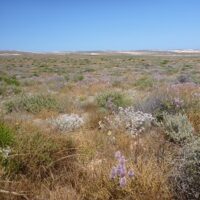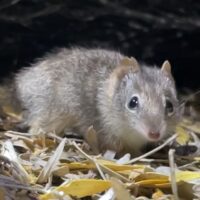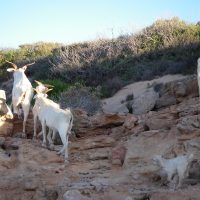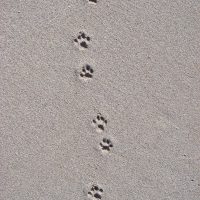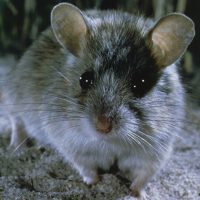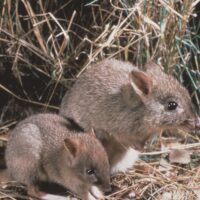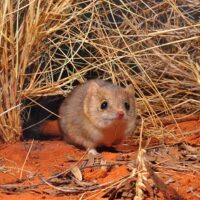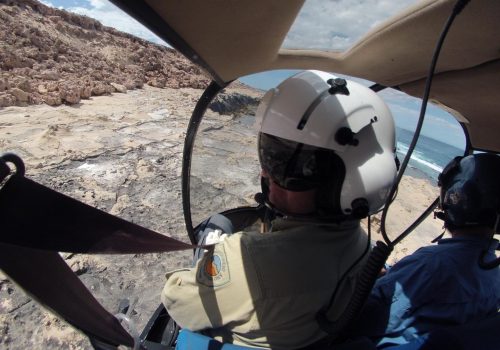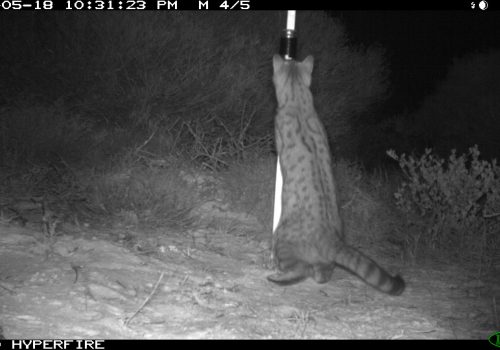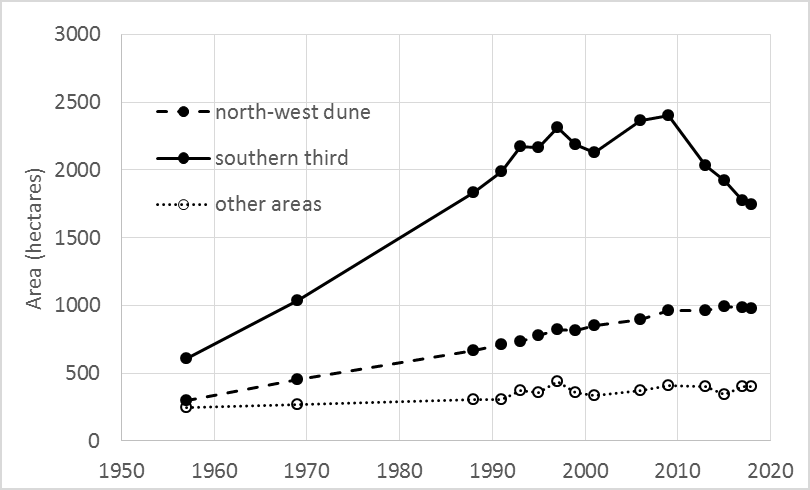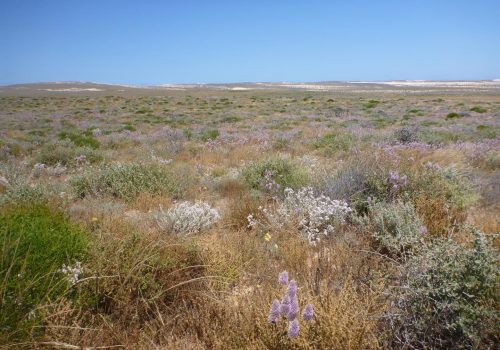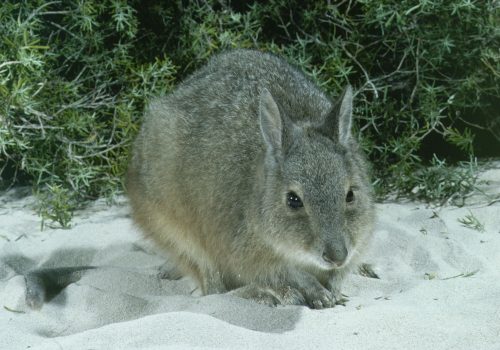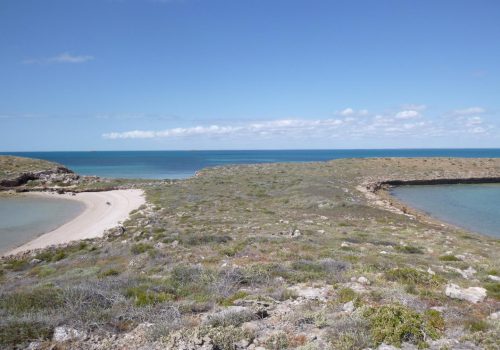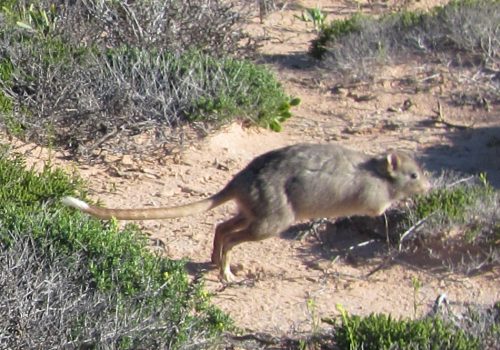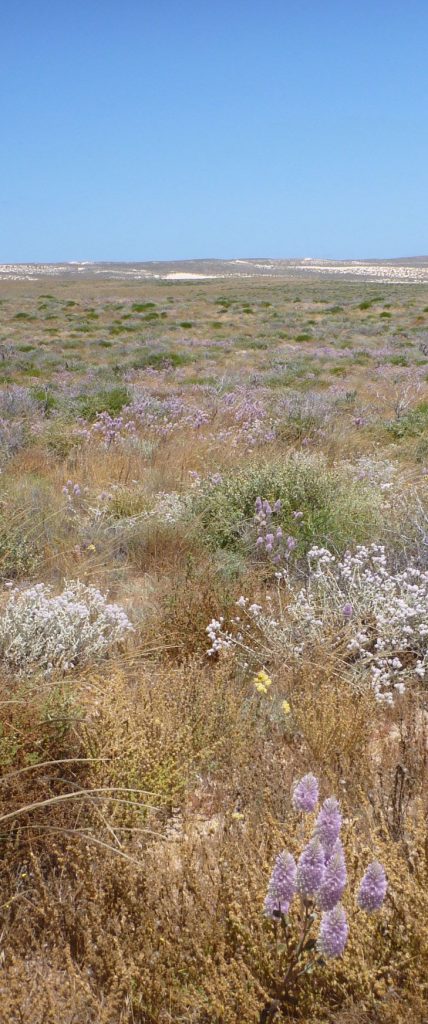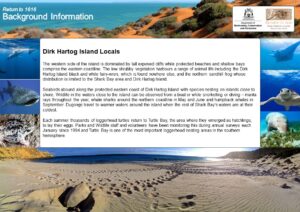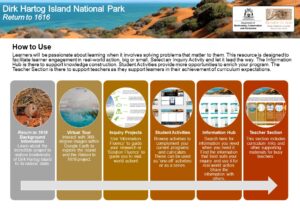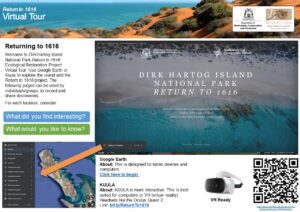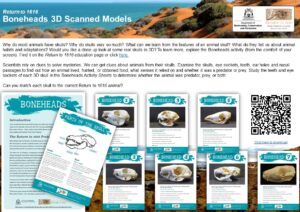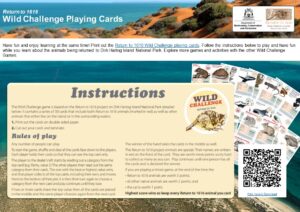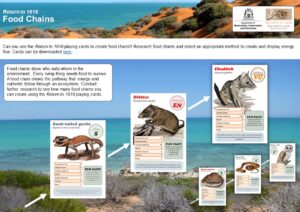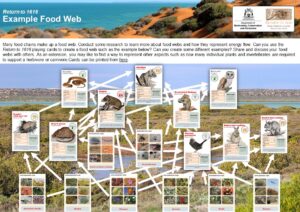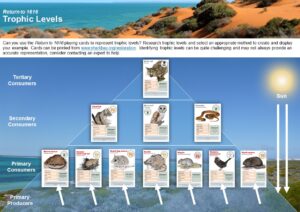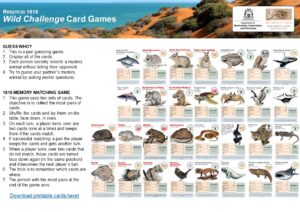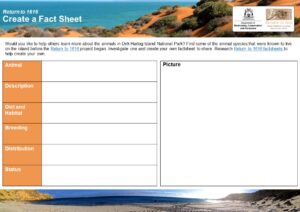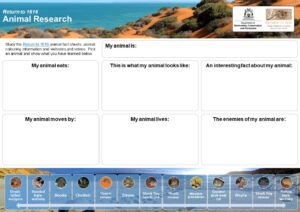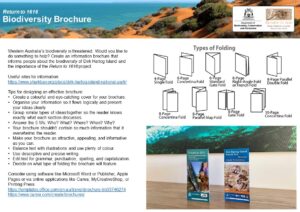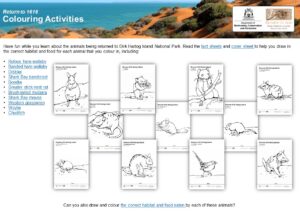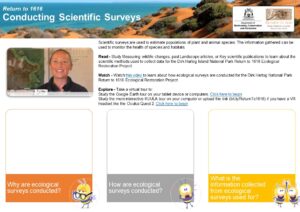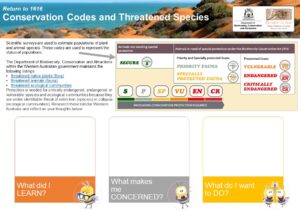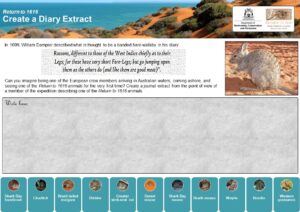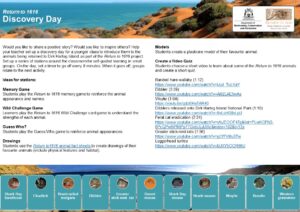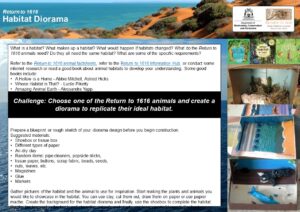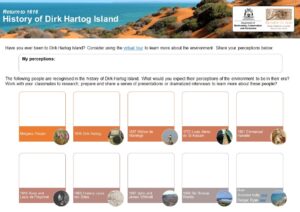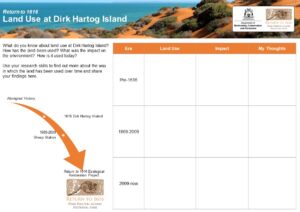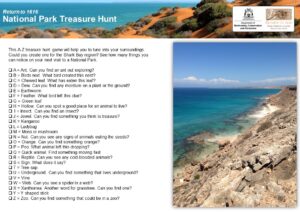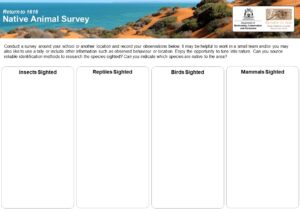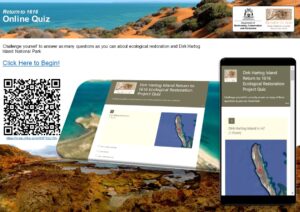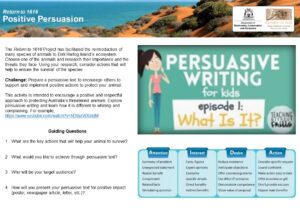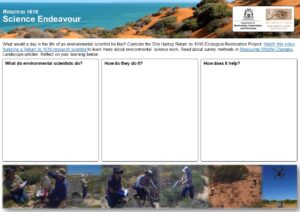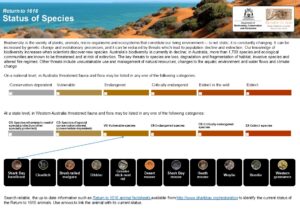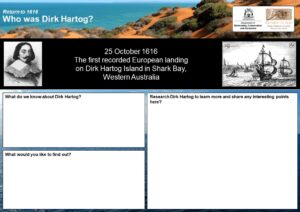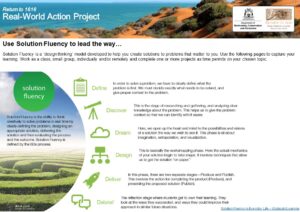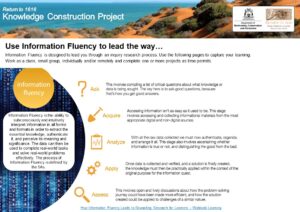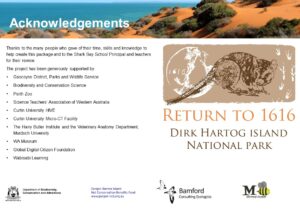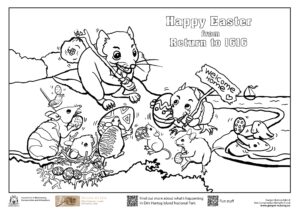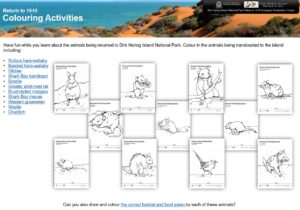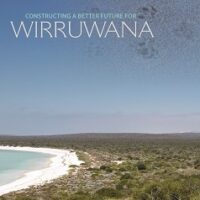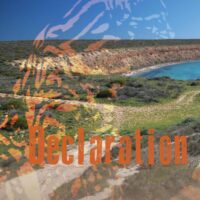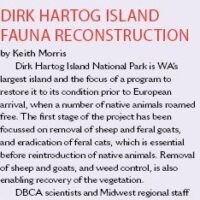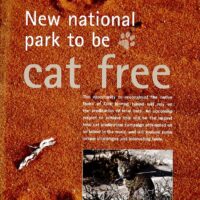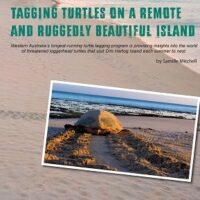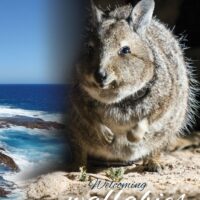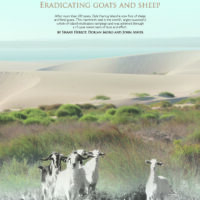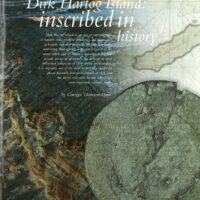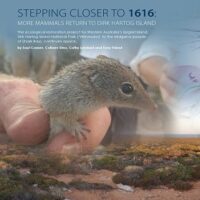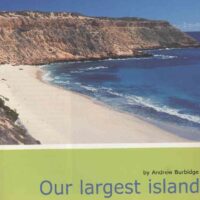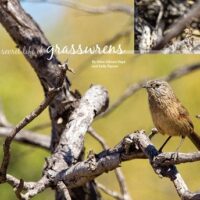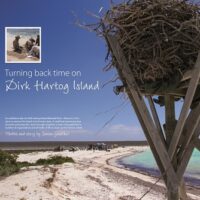Dirk Hartog Island National Park: Return to 1616
Dirk Hartog Island is Western Australia’s largest island and known to the Malgana traditional owners as Wirruwana. When first visited by Dirk Hartog on 25 October 1616, the island was in pristine condition but it has experienced significant changes to its ecology since that time. Sheep and goats changed the vegetation, their grazing habits and trampling reducing the food and shelter available for native species. Feral cat predation added to the pressures on native species and made it impossible for some to survive.
Ten species of small mammals and marsupials, and one small bird did not survive the changes to the island’s ecology. These include the Shark Bay bandicoot, chuditch, brush-tailed mulgara, dibbler, greater stick-nest rat, desert mouse, Shark Bay mouse, woylie, boodie and the western grasswren. They will be returned to the national park as part of the Department of Biodiversity, Conservation and Attractions’ (DBCA) Dirk Hartog Island National Park Return to 1616 Ecological Restoration Project. To improve their conservation status, two additional species that are highly likely to have once lived on the island, have also been included in the project. These are the banded hare-wallaby and rufous hare-wallaby. Return to 1616 brings hope for all these species.
With the removal of sheep by 2016 and goats by 2017, native vegetation is now growing back, providing habitat for native animals. The eradication of feral cats from the island was completed by October 2018 making the island safe for the return of native animals. Download the Return to 1616 brochure for more information.
The first full-scale translocation native animals began in 2018 with banded and rufous hare-wallabies. As of early 2023, native fauna species translocated to the island now includes the dibbler (bred at Perth Zoo), Shark Bay bandicoot, Shark Bay mouse, western grasswren and the greater stick-nest rat bringing the total up to seven.
You can help to protect these animals when visiting the island by watching the island protection video before you leave home. Learn more with a FREE education resource package that is available for teachers and students anywhere in the world to learn about the project with fun and fascinating exercises. Keep up to date with all of the latest Return to 1616 news with the Wirruwana Newsletter.
To enjoy the full experience, take a virtual tour of the Return to 1616 project and Dirk Hartog Island National Park from the comfort of your own home computer or mobile phone, or upload this link (bit.ly/ReturnTo1616) to your VR goggles.
Rufous and banded hare-wallabies were the first of the full-scale translocations to the island in 2018.
Things are really starting to get exciting on Dirk Hartog Island National Park. See above a female stick-nest rat above building her nest on her new island home!
The Dirk Hartog Island National Park Ecological Restoration Project is funded by the Gorgon Barrow Island Net Conservation Benefits Fund with additional funding from the Department of Biodiversity, Conservation and Attractions.
Intensive and systematic eradication and monitoring programs began in 2012 and were completed in October 2018.
Removing Goats
Major destocking efforts began on the island in 2007 when the pastoral leaseholders removed about 4000 sheep by barge. Along with destruction of about 2000 goats during the previous two years, this was in preparation for the change in tenure from pastoral lease to national park. Teams of Parks and Wildlife Service staff then culled the remaining sheep and most of the goats between 2008 and 2013.
Radio collars were fitted to fifteen female goats in order to track their whereabouts on the island. Female goats spend time with other females and attract the more solitary males. The radio collars were used to find the goats and their mobs during monitoring and culling operations.
By November 2017 at total of 5185 sheep and 11,133 goats had been removed from Dirk Hartog Island, with the last of the goats being the most challenging to remove. The final seven goats, all of them female radio collared goats, were removed in November 2017.
Dirk Hartog Island is the largest island in the world from which goats have been eradicated.
Removing feral cats
The feral cat eradication team started work by trapping feral cats, fitting them with satellite collars and tracking their movements. The information gathered helped determine that 1080 poison baiting would be effective on the island.
In 2014 the feral cat team constructed a fence to divide the island into two sections to make monitoring more efficient and effective. Located at the northern end of Herald Bay and extending nearly 13 km to the west coast, the 1.8 metre high fence is made of rabbit netting with an overhang at the top and three electric wires. A gate allows vehicles to continue travelling north-south along the main track.
After baiting, the southern area was intensively monitored from May 2014 until July 2015. Four types of traps were used: automated camera traps, sand pads, soft leghold traps and cage traps. All traps used scent lures to attract feral cats as food lures are more likely to attract other animal species.
Checks south of the fence were done using detector dogs during the winters of 2015 and 2016. Monitoring for feral cats north of the fence began in 2015 and detector dogs checked the northern part of the island in winter 2017. This was followed by two years of systematic 20 day searches covering the whole island four times a year.
The last feral cat detected south of the fence was in August 2015, and the last in the north was in October 2016.
All of this effort has led to the confident declaration in October 2018 that feral cats have been eradicated from Dirk Hartog Island.
Since 2007 the Parks and Wildlife Service has monitored changes to vegetation on Dirk Hartog Island. During this time sheep and goats have been removed, eliminating the only large herbivores on the island.
The vegetation monitoring program uses satellite images along with extensive ground validation to build a picture of how vegetation cover on the island is changing.
Changes were first detected and investigated using satellite imagery. Hundreds of images collected at near monthly intervals since 1988 were analysed to identify where vegetation cover had increased since destocking began in 2008. These areas were then validated on the ground to determine whether the increased ground cover was native vegetation or invasive weeds. Many of the areas shown by satellite imagery to have increased vegetation cover were found to be native species.
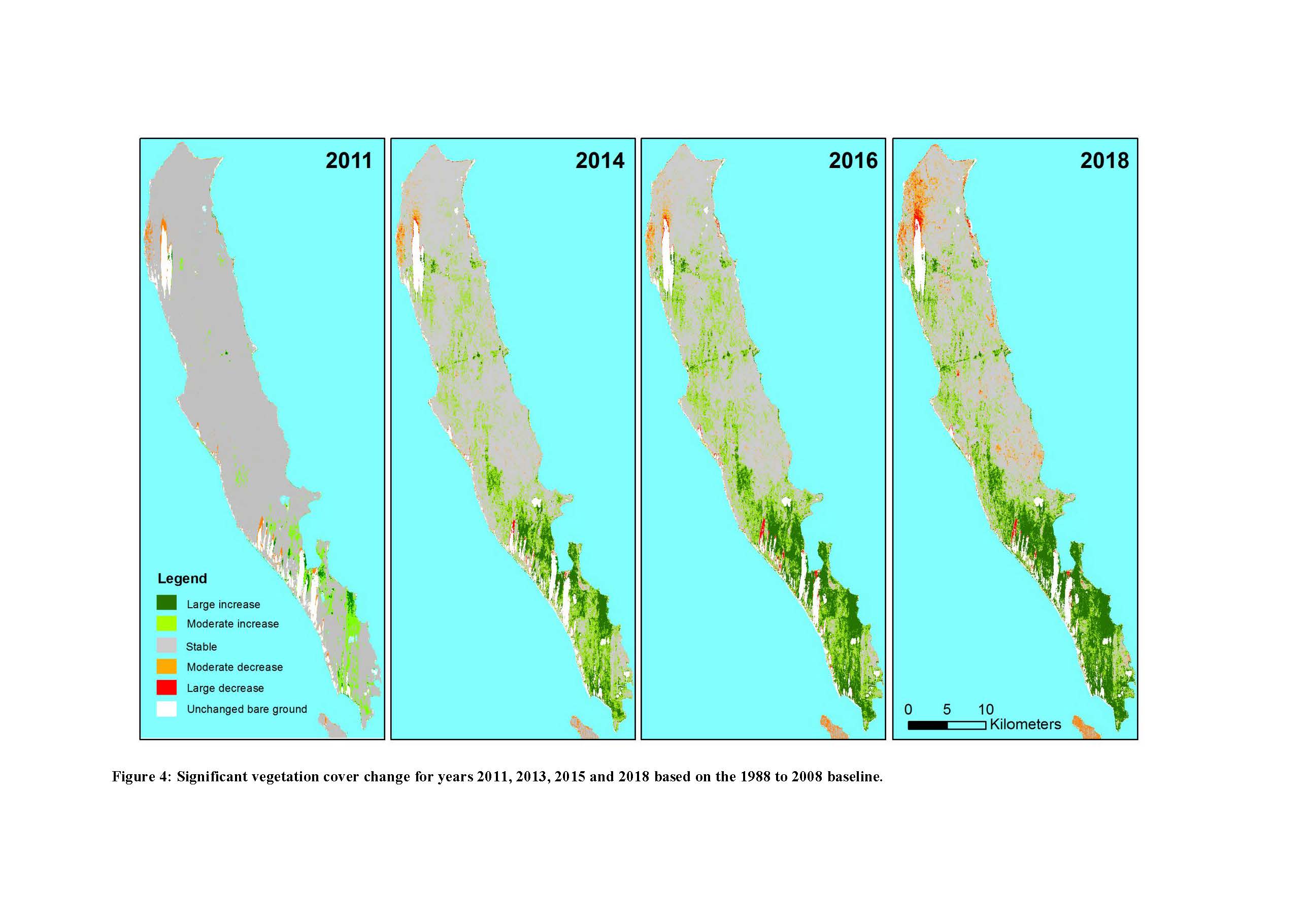
Significant vegetation cover change for years 2011, 2013, 2015 and 2018 based on the 1988 to 2008 baseline.
Changes in the extent of sand dunes reflect changes in vegetation cover with reductions in dune cover indicating increases in vegetation cover. The following graph shows sand dune extent changes across Dirk Hartog Island from 1957 to 2018.
Annual field checking continues with a team of Parks and Wildlife staff, including experts in botany and satellite imagery analysis.
Download this poster to find out more about the vegetation monitoring program.
Parks and Wildlife staff have prepared a strategic framework for translocating animals to Dirk Hartog Island between 2018 and 2030. Animals for translocation were selected primarily for either species conservation or fauna reconstruction purposes, although most achieve both.
Species conservation is about increasing a species’ chances of survival. The more viable populations there are of a species in different locations, the greater that species’ chances of survival. The two hare-wallabies, Shark Bay bandicoot, Shark Bay mouse, woylie, heath mouse, dibbler and chuditch are all being translocated to help their species survive because they each have only limited viable populations.
Fauna reconstruction as the primary purpose for species’ translocations acknowledges that animals also provide services to ecosystems. Pollinating plants, spreading seeds, or digging to improve the soil are ecosystem services. The primary purpose of translocating the greater stick-nest rat, western grasswren, desert mouse and mulgara to Dirk Hartog Island is fauna reconstruction.
Other factors considered when selecting the species for translocation included whether they formerly existed on Dirk Hartog Island or in the Yalgoo Bioregion; habitat suitability on the island; availability of source animals; and likelihood of successful translocation.
The many considerations for successful translocations range from sourcing sufficient numbers of the different species, to sequencing and timing their translocations, and ensuring animals are released at suitable sites.
Sequence and timing of translocations will take into account interactions between different species, including predator/prey relationships; habitat competition; conservation status; and availability of animals to translocate.
Interspecies relations
Some of the species proposed for Dirk Hartog Island have similar habitat needs and may compete with each other for food and/or shelter. Boodies are capable of outcompeting woylies in captive situations so these two species will be released at sites that are both far apart and initially separated by the management fence.
Predator/prey relationships also need to be considered. The chuditch is a nocturnal predator that preys on small mammals as well as insects, reptiles and birds. This species therefore cannot be taken onto the island until potential prey like the Shark Bay mouse, Shark Bay bandicoot and greater stick-nest rat are well established.
Conservation status
The banded hare-wallaby is one of two species with no evidence of having previously occurred on Dirk Hartog Island. However, it is considered a priority for introduction as it is vulnerable to extinction. Bernier and Dorre islands are the last refuges for this sub species of the banded hare-wallaby; the mainland sub species is extinct. Animals from Bernier Island supplied the Peron Captive Breeding Program and from there were translocated to Faure Island and to another mainland fenced site. Introducing the banded hare-wallaby to Dirk Hartog Island will further improve this species’ conservation status.
The animals for Dirk Hartog Island will come from various sources, including islands in Shark Bay. It is important to determine the health and genetic diversity of potential source populations before translocating any animals.
Health of source populations has several meanings. One is the size of the population – are there enough animals for the population to cope with animals being removed? Another is disease – are there any diseases within the source population that could pose problems? Genetic diversity is also important for the long term health of populations.
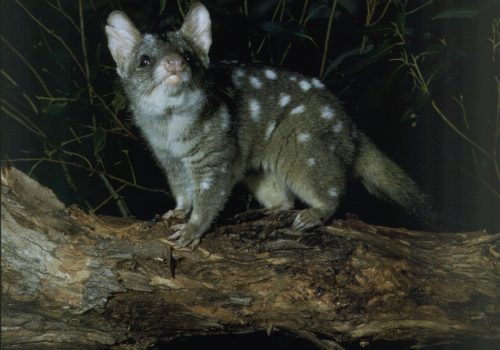
Find out more about the Return to 1616 animals.
Source populations for translocation will vary with species. Nearby wild populations are ideal, but not available for all species. Potential sources include islands, various wildlife sanctuaries, mainland populations and the Perth Zoo. Some of these are wild populations, others are captive breeding programs. Potential nearby sources are Salutation, Bernier and Dorre islands.
Surveys are always done to ensure there are sufficient numbers of a species in a source population before animals are translocated.
Salutation Island
Salutation Island has a healthy population of greater stick-nest rats that has established since their introduction to the island in 1990. However, measuring only about one kilometre wide by two kilometres long, Salutation Island is quite small and genetic diversity on the island will need management to maintain the long term viability of the population.
A survey was done in September 2016 to assess the genetic diversity of greater stick-nest rats on Salutation Island. This will help management determine whether rats are needed from other populations on South Australian islands to supplement genetic diversity on Salutation Island while also informing planning for Dirk Hartog Island.
Bernier and Dorre islands
Bernier and Dorre islands are potential sources for five species – the boodie, Shark Bay bandicoot, rufous hare-wallaby, banded hare-wallaby and Shark Bay mouse. The wild populations of these animals occur naturally on the islands – they were not introduced like the greater stick-nest rats were to Salutation Island.
Surveys were done on Bernier and Dorre islands in August 2016 as part of ongoing monitoring and assessing the islands as potential translocation sources for Return to 1616. Information collected over the years includes rainfall data and a range of details about species health and population sizes. The data is being analysed to answer questions like:
- Is the population of each species healthy enough to remove animals from?
- Is the genetic diversity of each species sufficient to repopulate Dirk Hartog Island from these islands alone?
- What is the best time to collect animals for translocation? How many years after good rainfall are population numbers peaking, and therefore best for removing animals?
Some species may need to be sourced from different places when these questions are answered. Generally the options are limited with Bernier and Dorre islands being the only source for banded hare-wallabies; and the main source for Shark Bay bandicoots, Shark Bay mice and the island sub species of rufous hare-wallaby.
Invasive weeds threaten natural ecosystems by displacing native species. When weeds displace native plants, animals are left without their natural homes and food. Consequently managing weeds is an important part of land management and ecological restoration and all visitors to Dirk Hartog Island are encouraged to make sure their vehicles, trailers, boats and equipment are clean and free from soil, weeds and other potential pests.
The Dirk Hartog Island Weed Management Plan recommends the following management of weed species on Dirk Hartog Island:
Weeds to Eradicate
Couch, Cynodon dactylon
Castor oil plant, Ricinus communis
Japanese pepper, Schinus terebinthifolius
Lupin Lupinus cosentinii
Wild Radish, Raphanus raphanistrum
Weeds to Control
Ice plant, Mesembryanthemum crystallinum
Fourleaf allseed, Polycarpon tetraphyllum
False sowthistle, Reichardia tingitana
Weeds to Prevent
‘High risk alert species’ have been recorded in Shark Bay but are not currently known on Dirk Hartog Island. It is important that any sightings of these species on the island are reported so they can be checked and dealt with promptly.
Ruby dock, Acetosa vesicaria
Kapok bush, Aerva javanica
Mexican poppy, Argemone ochroleuca
African boxthorn, Lycium ferocissimum
Crownbeard, Verbesina encelioides
Keep up to date with all the latest news of the Dirk Hartog Island National Park Return to 1616 Ecological Restoration Project.
Read the Wirruwana News and Inscription Post Conservation Matters
Dibblers from Jurien Bay, Facebook post December 2018
School Resources
Primary School and Secondary School
Introducing the new primary and secondary school curriculum-based education package, suitable for Kindergarten to Year 10, for the Dirk Hartog Island National Park Return to 1616 Ecological Restoration Project.
Welcome to the Dirk Hartog Island National Park Return to 1616 Ecological Restoration page for education. Here you will find an exciting collection of resources ready for you to use in (or outside of) your classroom.
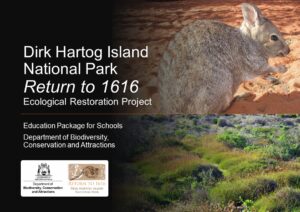
| Resource | Achievement Standards | F | 1 | 2 | 3 | 4 | 5 | 6 | 7 | 8 | 9 | 10 |
| Virtual Tour | Science, HASS, English | J | J | J | J | J | J | J | J | J | ||
| Knowledge Construction Inquiry | Science, HASS, English | J | J | J | J | J | J | J | J | J | J | J |
| Real-World Action Inquiry | Science, HASS, English, Technologies | J | J | J | J | J | J | J | J | J | J | J |
| Boneheads | Science | J | J | J | J | J | J | J | J | J | ||
| Status of Species | Science | J | J | J | J | J | J | J | ||||
| Conducting Scientific Surveys | Science | J | J | J | J | J | J | J | ||||
| Conservation Codes and Threatened Species | Science, HASS, English | J | J | J | J | J | J | |||||
| Native Animal Survey | Science | J | J | J | J | J | J | J | J | J | J | J |
| Animal Research | HASS, Science, English | J | J | J | J | J | J | J | J | J | ||
| Create a Fact Sheet | HASS, Science, English | J | J | J | J | J | J | J | J | J | ||
| Biodiversity Brochure | English, Science, HASS, Technologies | J | J | J | J | J | J | J | J | J | J | J |
| Discovery Day | Science, HASS, English | J | J | J | J | J | J | J | J | J | ||
| Habitat Diorama | Technologies, Science, HASS | J | J | J | J | J | J | |||||
| Science Endeavour Investigation | Science, HASS | J | J | J | J | J | J | J | ||||
| National Park Treasure Hunt | Science | J | J | J | J | J | J | J | ||||
| History of Dirk Hartog Island | HASS, English, Science | J | J | J | J | J | J | J | J | |||
| Who was Dirk Hartog? | HASS, English | J | J | J | J | J | J | J | J | |||
| Land Use at Dirk Hartog Island | HASS, English | J | J | J | J | J | J | J | J | |||
| Create a Diary Extract | English, HASS | J | J | J | J | J | J | J | J | |||
| Positive Persuasion | English, Science, HASS | J | J | J | J | |||||||
| Online Quiz | English, Science, HASS | J | J | J | J | J | J | J | J | |||
| Colouring Activities | Science, Art | J | J | J | J | J | ||||||
| Wild Challenge Card Game | Science, English | J | J | J | J | J | J | J | J | |||
| Food Chains | Science | J | J | J | J | J | J | J | J | |||
| Food Web | Science | J | J | J | J | J | J | J | J | |||
| Trophic Levels | Science | J | J | J | J | J | J | |||||
| Other Wild Challenge Games | Science | J | J | J | J | J | J | J |
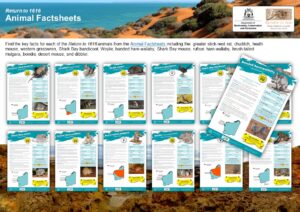
|
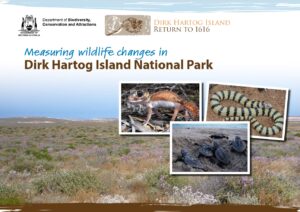
|
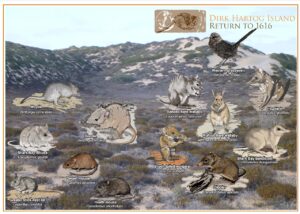
|
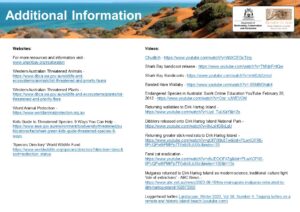
|
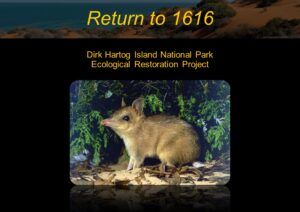
|
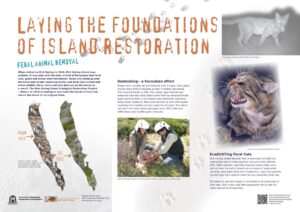
|
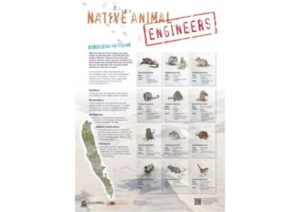
|
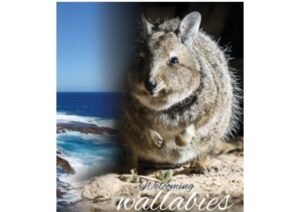
|

|
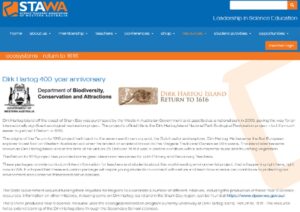
Year 9 Ecosystems and Chemistry resources – Science Teachers’ Association Western Australia (STAWA) |
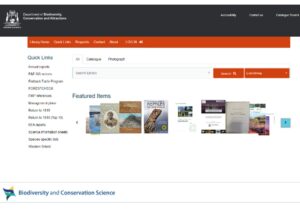
|
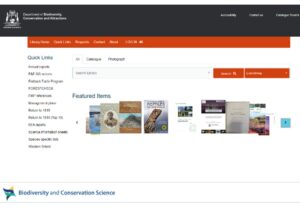
|
Welcome to the Dirk Hartog Island National Park Return to 1616 Ecological Restoration page for education.
Download the full package below:
School Holidays Activities
- Have some fun with the new Easter colouring in page
See who’s the latest native animal species to be returned to Dirk Hartog Island National Park.
- Take a virtual reality tour on your holidays! Either explore the Return to 1616 project and its animals on your computer here (make sure you have your sound turned on) OR if you have a virtual reality headset, upload the link (bit.ly/ReturnTo1616) and take a trip to Dirk Hartog Island National Park.
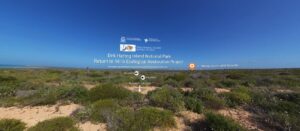
- Want to learn more about how these native animals are adapted to their environment? Check out the “Boneheads” activity. Click on the links for each animal to see amazing 3D skulls of the animals and zoom up the nose of a chuditch!
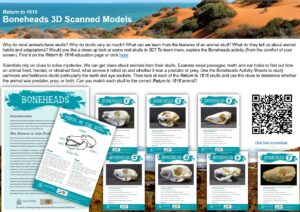
- Print out and play the Return to 1616 card game Wild Challenge. Have fun while you learn about the animals being returned to Dirk Hartog Island National Park.
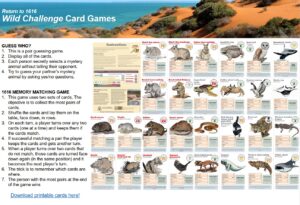
- Colour in the eight native animal species that have already been returned to the island including the:
- Colour in some of the native animals, that will be returned to the island over the next few years including the:
- Download the fun fact sheets and draw in the correct habitat for each of your ‘colour in’ animals above.
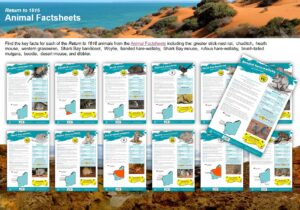
- When you’re finished keep them in your very own Return to 1616 colour in folder
- Take a look at some of the other native animals that live in Dirk Hartog Island National Park.

News
Subscribe to the Dirk Hartog Island National Park Return to 1616 Ecological Restoration Project newsletter Wirruwana News or browse all the latest Return to 1616 news at Sharkbay.org.
Publications
Research the top ten scientific publications on Return to 1616
Browse the full list of Return to 1616 publications
Explore the rich history of Dirk Hartog Island National Park with Landscope Magazine
Media
Rare marsupial released onto Island haven
Program to restore historic WA Island (Northern Guardian)
Turning back the clock on feral island (Australian)

